By Robin Overbay
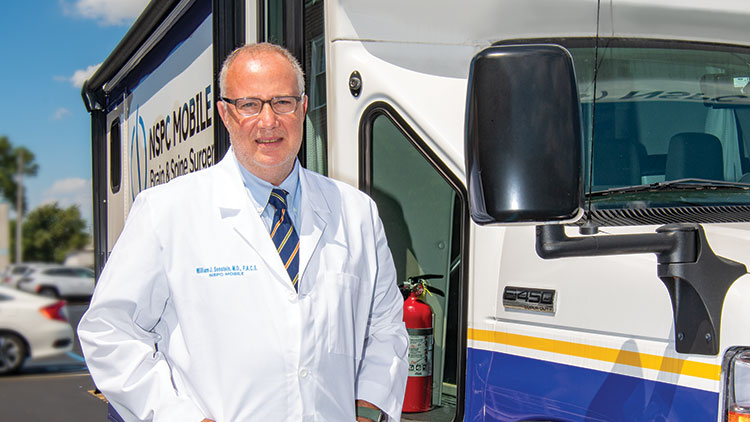
NSPC Brain & Spine Surgery takes a collaborative approach to the management of spine conditions, offering patients evidence-based medicine and the convenience of an innovative mobile clinic where they can be seen during their break at their workplace.
From simply sitting in a chair to working or exercising, spine issues can cause pain that interferes with almost every activity of life. Nerve root impingement, for example, can result in debilitating pain that may radiate to the extremities. As they become more severe, spinal conditions can also interfere with a patient’s functional abilities. For instance, spinal stenosis or herniated discs can be associated with myelopathic conditions that can result in permanent disability if left untreated.
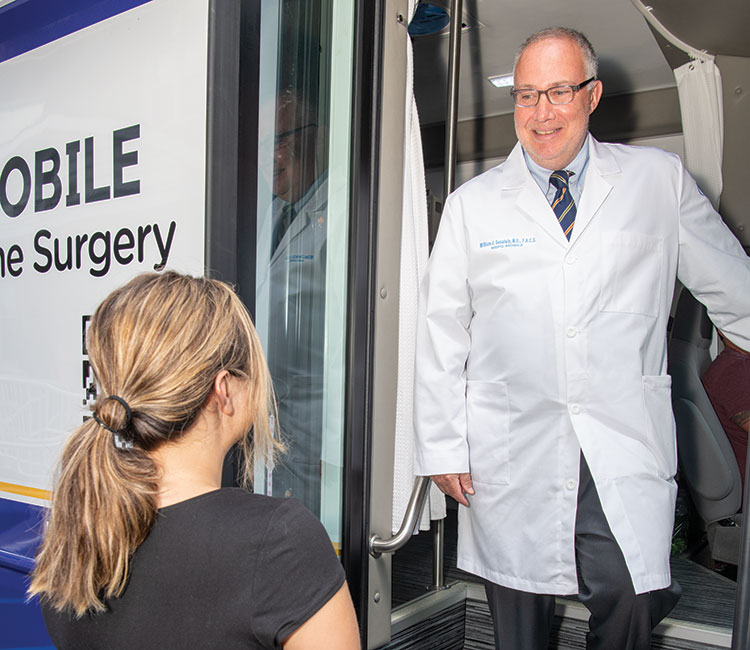
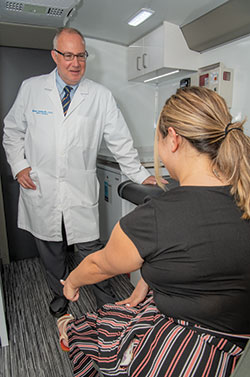
While physicians typically offer conservative measures first, many patients ultimately benefit from spine surgery. Spinal procedures may be considered when the patient’s history and physical exam are concordant with findings on neuroimaging, such as MRI or CT scans, and measures such as physical therapy, chiropractic care and medications have failed to provide relief. In cases of significant neurologic deficits — such as impaired gait, incontinence, movement loss or weakness — spine surgery may be warranted in a more urgent fashion.
Neurosurgeons at NSPC specialize in treating spine pain and neurologic symptoms, and they do so in a timely fashion. Patients receive prompt consultations either in office or through NSPC’s mobile clinic. Patients with radicular pain or myelopathic symptoms do not have to wait or undergo extensive work up prior to receiving consultation at NSPC.
“I don’t care if the patient has been worked up or not,” says William Sonstein, MD, FACS, attending neurosurgeon and President at NSPC. “I’m happy to take their case and proceed from there.”
From initial consultation to imaging and various therapies or surgeries when indicated, Dr. Sonstein is proud to offer spine care from start to finish.
Collaborative Approach
NSPC encourages cross-disciplinary collaboration in spine cases. Partnerships between neurosurgeons and orthopedic surgeons allow patients to benefit from the skill sets of both disciplines.
Neurosurgeons are well-versed in spine procedures; in fact, spine surgeries make up the bulk of their surgical cases, as conditions requiring brain surgery are less common.
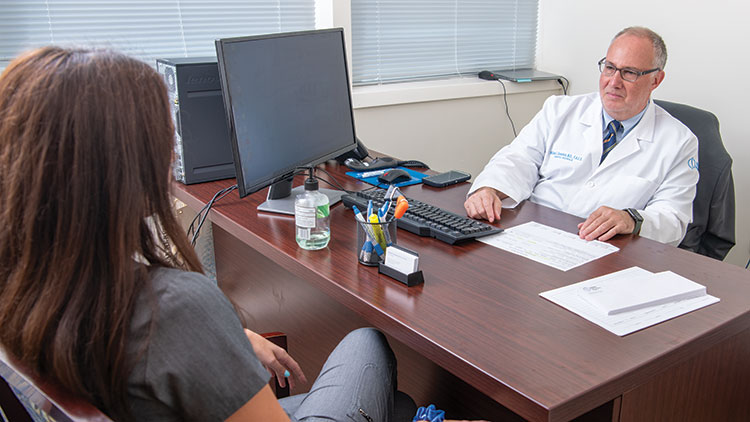
“We do a lot of training in spine surgery throughout our entire professional development,” Dr. Sonstein says. “By contrast, when orthopedic physicians study spinal procedures, it tends to be as part of a fellowship following their residency.”
From their early professional careers, neurosurgeons are proficient at decompressing spinal nerves and spinal cords, while orthopedic surgeons are adept at instrumentation using screws, plates and rods placed into bone. However, there is plenty of overlap between the two fields, and collaboration between neurosurgeons and orthopedic surgeons yields excellent results.
“We were the first in the area to adapt this and scale the process of collaboration with orthopedic surgeons in our spine surgical treatments,” Dr. Sonstein says. “Working together allows patients to have the best of both worlds. We refer patients to one another, so patients get two opinions.”
Dr. Sonstein believes that this collaboration with orthopedic surgeons helps improve each patient’s overall experience. They feel reassured that they have received two opinions and that their physicians concur on their course of treatment.
“I think when they know two doctors have independently evaluated them and agree about their best course of treatment, they are going to feel better about what treatment they are getting,” Dr. Sonstein says.
NSPC’s collaborative relationship with orthopedic surgeons allows patients to benefit from two independent minds looking at their case and making judgments so they can receive optimal care. Every neurosurgeon at NSPC is encouraged to collaborate with an orthopedic surgeon, a practice borne out by experience.
“I was doing this for 25 years as an attending, and I’ve been working with my orthopedic colleague for more than 20 years,” Dr. Sonstein says. “We know each other’s movements, feelings and thoughts. When you have two doctors who really love working together, are familiar with each other’s movements and can really anticipate what is next, it sets up an ideal situation for success.”
From sharing second opinions to informal consultations, NSPC neurosurgeons collaborate with each other, as well. Yet, each surgeon provides patients with the long-term, in-depth relationship characteristic of a physician in private practice.
“We have a university-style practice, but it’s a private practice that offers a more boutique experience,” Dr. Sonstein says. “Patients benefit from the close patient-provider relationships that you don’t find in a university setting.”
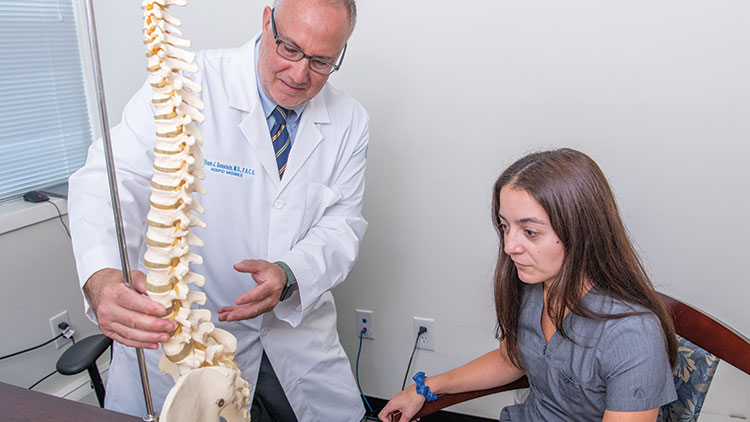
“We see patients the day we hear from them or the day after — we don’t let patients wait.”
— William Sonstein, MD, FACS, attending neurosurgeon and President at NSPC
New Approaches to Traditional Surgeries
For the most part, spine surgery has not changed tremendously in recent years, Dr. Sonstein says. Still, many advances have resulted in incremental benefits for patients.
“The thing that has changed is that the corridors through which the spine is accessed have become more minimally invasive,” Dr. Sonstein says.
Those changes include using retractors and devices that allow the surgeon to make a smaller incision to reach the surgical site, whereas traditionally the surgeon would have approached through a larger incision. For either option, the goal remains the same.
“The truth is that there is really not that much of a difference in outcomes from the less invasive surgeries, but there is better healing time and a quicker return to full functionality,” Dr. Sonstein says. “The bottom line is that you’ve got to do the right surgery. In the end — whether it’s minimally invasive or a more traditional surgery — what you end up doing to the spine is pretty much the same.”
However, some minimally invasive techniques for spine surgery allow the physician to take advantage of approaches that weren’t possible through a traditional incision.
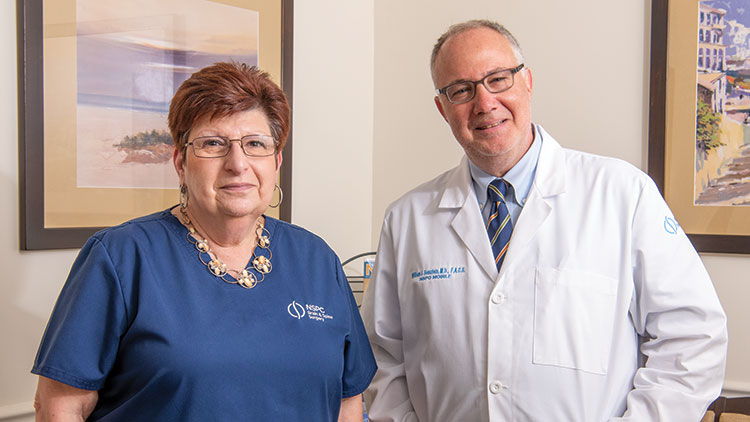
Advances in Fusion Surgery
In some areas, new approaches are transforming the surgical landscape. Interbody fusion is one such surgery.
“There’s been a real explosion of surgeons operating through lateral approaches, and those approaches are generally done to fuse the disc space,” Dr. Sonstein says. “This is called an interbody fusion. The rationale is that this improves on the traditional placement of these interbody fusions of the disc space.”
This approach has become more popular over the years.
“More of the younger surgeons who have been trained in the last 10–15 years prefer employing these techniques,” Dr. Sonstein says. “A lot of the doctors in our group offer that minimally invasive interbody fusion.”
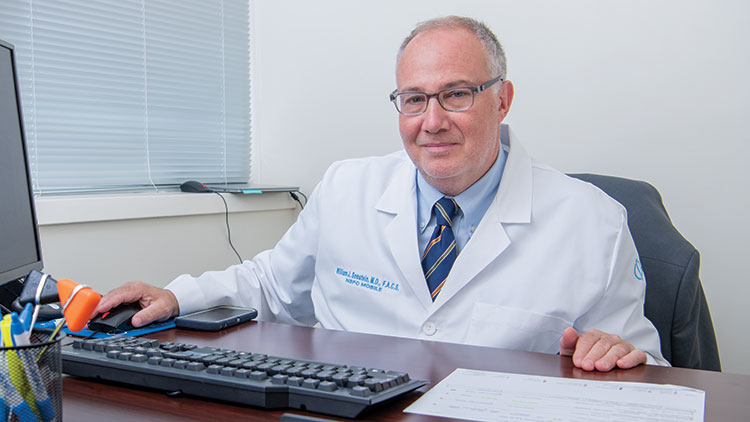
“A lot of patients who come to see us at NSPC Mobile have no idea where to turn. We’re a valuable resource to patients in an area of medicine that can feel scary to a lot of people.”
— William Sonstein, MD, FACS, attending neurosurgeon and President at NSPC
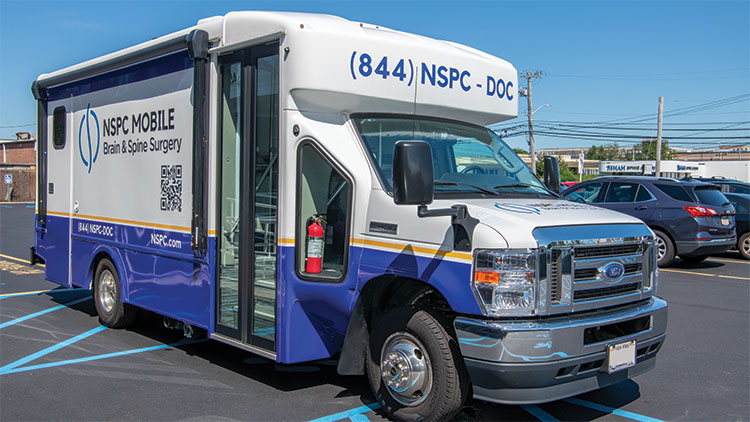
Careful Patient Selection
As long as the surgery is indicated and performed correctly, the outcomes between traditional approaches and minimally invasive approaches have a negligible difference, according to Dr. Sonstein. Patient selection can make all the difference in whether the approach — conventional or minimally invasive — will be successful.
There are some exclusion criteria for minimally invasive spine surgery. Patients who require revision surgery are typically not good candidates for minimally invasive spine surgery, Dr. Sonstein explains.
“Patients who have had prior surgery and have quite a bit of scarring — those cases are much more complex and challenging,” he says. “They require direct visualization to accomplish what we need to accomplish.”
With the complexity associated with revision surgeries, minimally invasive techniques may not always allow enough exposure to accomplish the goals of the revision surgery.
“Some of these patients have had more than one previous surgery,” Dr. Sonstein says. “They need a more traditional approach to resolving their problem.”
The danger of using minimally invasive spine surgery is that it limits the visualization of the area the surgeon is operating on, Dr. Sonstein says. It also limits surgical control over the procedure, so the surgeon may not always be able to accomplish the desired goal.
“That may in fact predispose the patient more for complications,” Dr. Sonstein says. “The physician may not be visualizing the spine in the way it should be properly visualized for the sake of performing the operation through a tiny incision.”
Revision Surgeries
Some patients who have undergone prior spine surgery may develop new symptoms and require revision surgery. Problems will emerge at the segment above or below the spinal segment that was previously surgically corrected. NSPC surgeons welcome consultations for revision surgery, no matter where the patient’s original procedure was performed.
Revision surgeries can correct the underlying issue, thus alleviating symptoms and improving stability in the spine. While the success rates of a second surgery are not as high as a primary surgery, if the surgery is well indicated and all means of conservative management have failed, the procedure can provide highly satisfactory results, Dr. Sonstein states.
“If a patient has had an L4-5 fusion, they can develop problems above at L3-4,” Dr. Sonstein illustrates. “They can develop arthritis that narrows the spinal canal and compresses the nerve, and they can develop new symptoms that you may be able to treat conservatively — which is always recommended first. However, if they have a true abnormality that develops secondarily, and their symptoms don’t respond to conservative management, then they need to have revision surgery.”
In another scenario for revision surgery, a patient who had a herniated disc removed may experience another disc herniation at the same level. That patient may also be a candidate for revision surgery.
Revision surgery can be more complicated than the primary surgery. However, many revision procedures involve spinal cord decompression, something NSPC’s neurosurgeons have deep experience in performing.
“It makes things more complex, and you have to know how to work around that scar and develop the proper tissue plains in order to successfully decompress the spinal canal, which is what you’re doing most of the time,” Dr. Sonstein says. “That’s one of the things I specialize in — taking arthritic, degenerative material off the spinal membrane and doing it safely so we get successful decompression without having any complications such as a spinal fluid leak. When you have revisions or scarring, that makes the tactical incidence of getting a spinal fluid leak higher, so that’s why you need to be careful and have good visualization of what you are doing.”
As well as correcting the patient’s complaint, a surgeon performing a revision aims to make all efforts to reduce the risk that the patient has another issue in the future. For instance, if a patient received a prior discectomy or microdiscectomy and then experienced a new herniation at the same level, the surgeon — in addition to removing the new herniation — may fuse that section of the spine, ensuring the patient doesn’t have any more abnormal motion at that segment to re-herniate the disc.
Sometimes the natural course of events that occur are out of the surgeon’s control. A surgeon cannot always prevent patients who have had a spinal fusion from developing a next-segment problem in the future.
For that reason, researchers are exploring ways to prevent the need for second operations — an avenue of study NSPC surgeons are following avidly in order to benefit their patients.
Some of this research includes avoiding spinal fusion to prevent creating a stiff spinal segment by replacing the disc. Dr. Sonstein uses cervical disc replacement as an example.
NSPC’s Mobile Clinic
NSPC Brain & Spine Surgery’s mobile clinic offers patients a unique level of accessibility and convenience.
When William Sonstein, MD, FACS, an attending neurosurgeon and President at NSPC, learned that his wife, a radiologist, offered mammograms through a mobile clinic, he was inspired to create something similar for NSPC. Back pain — like screening mammograms — may be something busy patients try to ignore as long as they can. A mobile clinic, however, lets patients receive a neurosurgical evaluation with minimal time away from their busy lives.
Known as NSPC Mobile, NSPC’s mobile clinic is housed in a brand-new van that contains a complete examination room and is equipped with computers and Wi-Fi so imaging studies can be reviewed during the patient’s mobile clinic visit. The mobile clinic is even equipped with a private restroom. NSPC Mobile offers everything needed for a full neurosurgical consultation.
“The whole point is to make it more convenient for patients, so they don’t have to take the day off of work in order to get the care they need,” Dr. Sonstein says.
Instead, NSPC Mobile goes to the workplace so that patients can be seen on their break. To expedite their office visit, patients fill out their medical history forms online prior to their appointment. Then they are evaluated by a board-certified neurosurgeon who makes recommendations for their care.
If a patient comes in without any prior evaluation, NSPC neurosurgeons can order the appropriate imaging and refer them out for conservative care such as physical therapy, pain management or chiropractic care if they do not require surgery at that time. If they have an issue that is determined to not be neurosurgical, they are referred to the appropriate specialist.
The neurosurgeon also takes time to educate the patient and to reassure them when needed.
“We can help make the problem seem simpler to the patient and make them feel better — that they’re not going to be paralyzed, they’re not going to die, it’s not cancer,” Dr. Sonstein says. “I give patients the same time and attention in the van as I do in the office.”
NSPC Mobile gets approval to park at certain businesses where employees can be evaluated on-site.
“It is relatively new, so we’re not open yet to the general public,” Dr. Sonstein says. “We are trying to get the program going to specific areas where patients are employed.”
Patients can sign up for NSPC Mobile on NSPC’s website. They can then be seen once their workplace gives approval. Currently, NSPC Mobile is traveling to various government buildings and town halls to treat employees. The aim is to expand to other organizations where people have a hard time stepping away from work for a few minutes or an hour, such as schools.
“The problem with a disc replacement in the neck — if you look at the literature on this — is that the results in the end are no different than actually performing a traditional fusion in the neck to remove a one-level or two-level disc,” he says. “The spine is so much more complex than any other structure in the body — even the brain — because the spine has so many moving parts, so many issues, so many more things going on than other parts of the body. Here we have nerves around the joint, so it is so much more complicated.”
However, NSPC’s spine surgeons love this complexity and welcome the opportunity to help patients live with maximum ease and functionality. With NSPC available on Long Island, patients need not travel to a large urban center for excellent spine care.
“I just enjoy what I do,” Dr. Sonstein says. “As long as my hands can still work, I’ll do it.”
Please visit nspc.com to learn more about services and providers.
